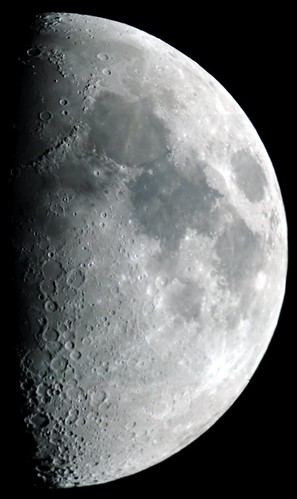Rather than using the SBIG ST-8 CCD camera, I opted for my Nikon D90 for these photos. In some respects its better, in other ways not so much. First stop: The Sun.

In this image, you can see the Sun’s chromosphere and a small prominence on the left side of the image. The camera doesn’t have the resolution nor dynamic range of your eyeball, so cool though this may be, nothing substitutes for seeing the Sun live. This image was taken through a DayStar H-alpha filter threaded to the back of our 12″ Meade on the roof of the CLB with my D90. I’ve tried doing solar imaging with the SBIG camera, but even at the fastest shutter speed, the image saturates. Even in the above image, the disc of the Sun is overexposed in order to make the chromosphere visible.

Alberio is a nice double star in the constellation of Cygnus. If you have a pair of binoculars, this is an easy target. The color difference between the two stars is due to their different temperatures. The bright blue star is extremely hot where as the yellow star is cooler (relatively speaking) with a temperature closer to that of our own Sun. This image is a single 30″ exposure with the D90 set at ISO3200. The noise isn’t too bad, but being a single shot, there’s more noise and less detail than one could get by taking multiple images and combining them. I’ll try that some time soon. With the D90 as opposed to the SBIG, the colors of the two stars are really easy to capture. With the SBIG, one would have to take three separate images through a red, a green, and a blue filter and combine them to form the color image. Doable, but definitely more work.

This image of the Great Cluster of Hercules, M13, is a single 30″ exposure like the image of Alberio, but with the much dimmer object comes a lower signal-to-noise ratio. Imaging objects like this is where the SBIG becomes vastly superior to a digital SLR like the D90. As with the Alberio image, this image could be improved by combining multiple exposures.








